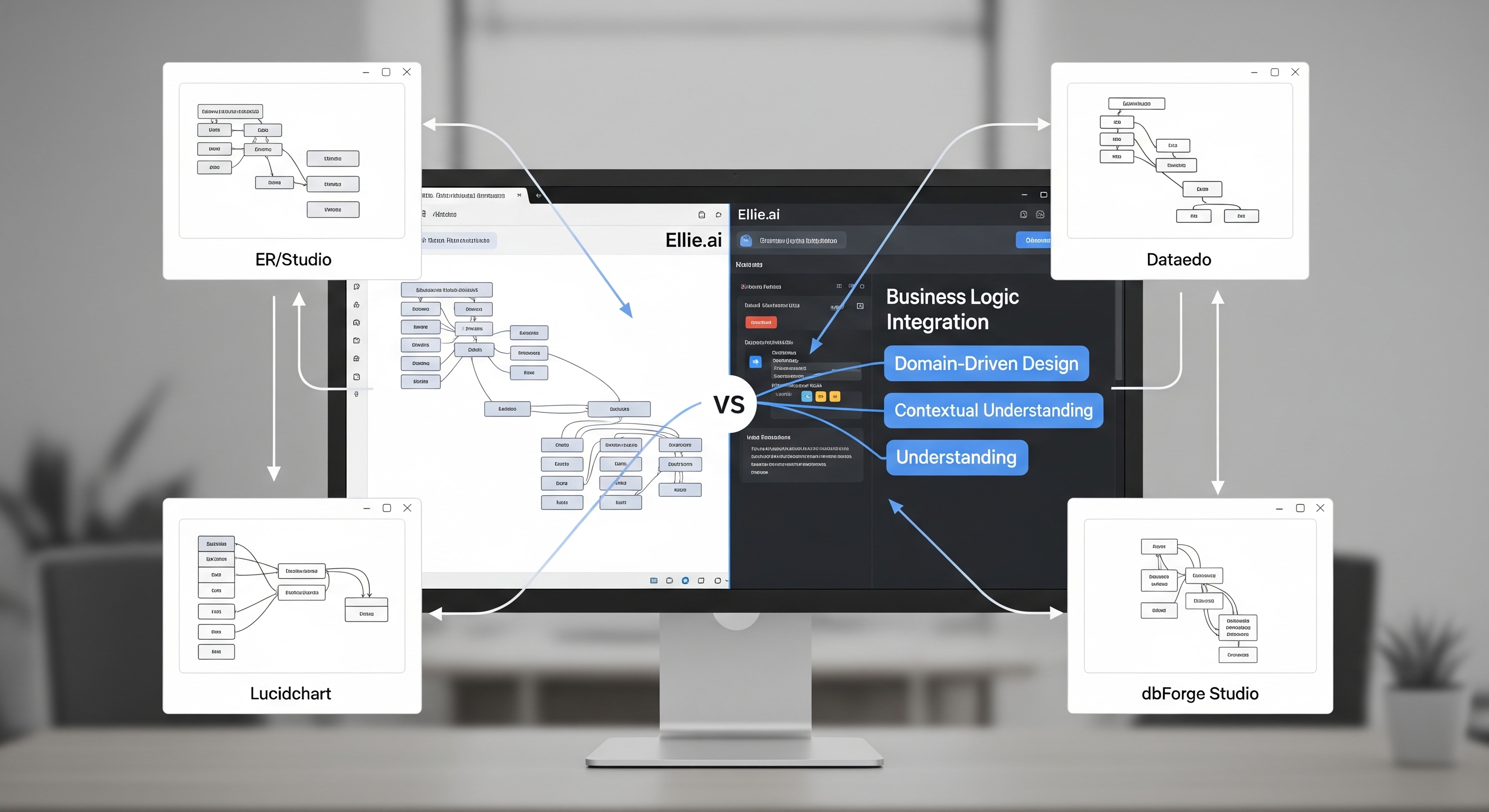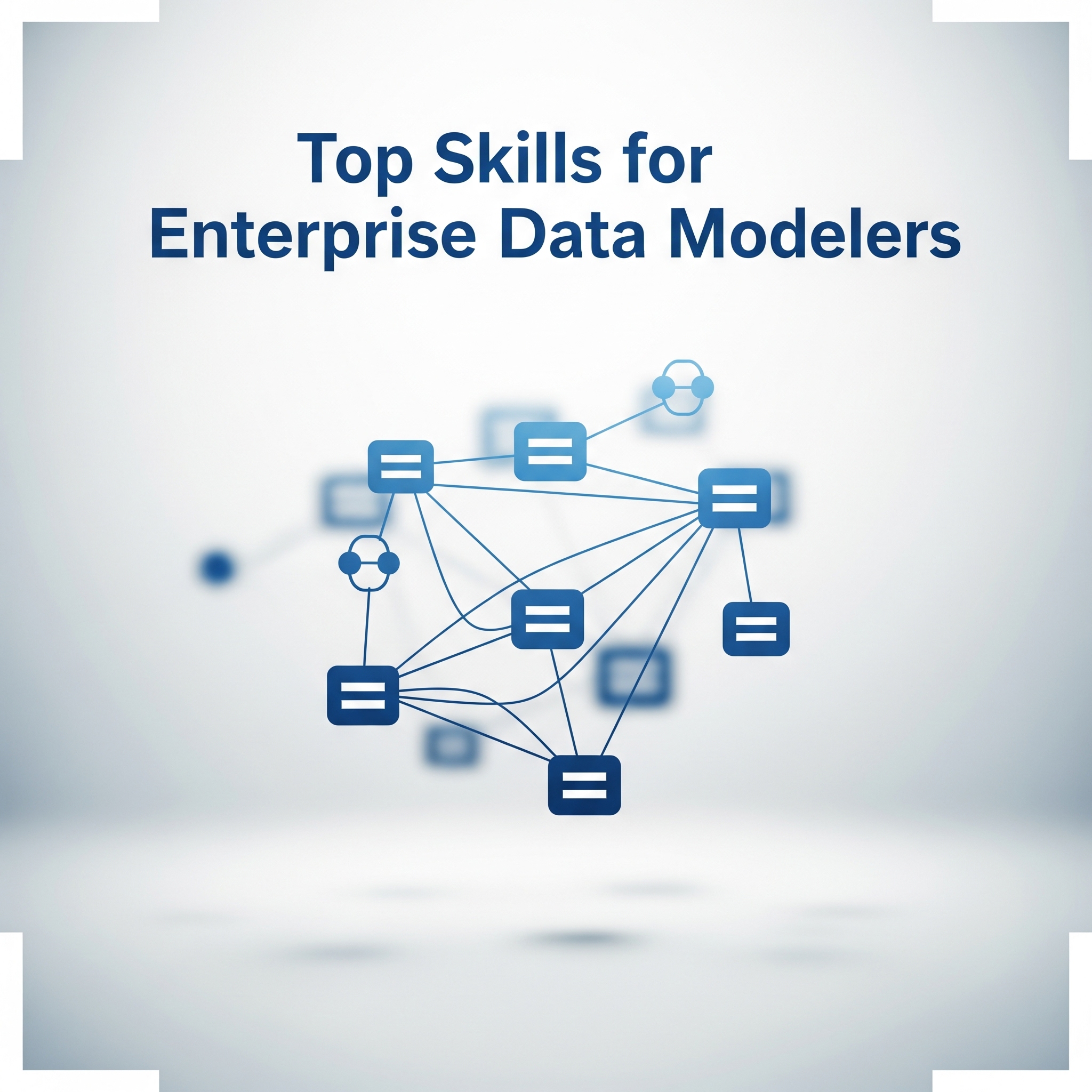Data Modeling Tools Compared: How Ellie.ai Brings Business Logic into the Model


Most organizations have nailed the technical side of data modeling. They’ve built modern warehouses, automated pipelines, and documented every field with precision. Yet even with strong infrastructure in place, many still struggle to derive meaning from their data.
The problem isn’t that today’s modeling tools are ineffective, it’s that most were designed for structure, not semantics. They describe how data connects technically but not how it connects conceptually. The business logic, including the definitions, relationships, and rules that give data context, often lives outside the model, scattered across spreadsheets, wikis, and institutional knowledge.
In this article, we explore how leading data modeling tools address modern challenges, where they succeed, where they fall short, and how Ellie.ai bridges the gap by bringing business logic directly into the model itself.
The Evolution of Modeling Tools
In the early days of enterprise data, modeling was about control. Tools like ER/Studio and PowerDesigner helped architects document every table, column, and relationship in a database. These tools produced beautifully structured systems but were built for an era when data changed slowly and business questions were predictable.
Then the cloud arrived. Speed replaced stability as the top priority. Tools like dbt empowered analysts to build data models directly in code, introducing version control, testing, and documentation. BI platforms such as Looker, Tableau, and Power BI layered business-friendly semantics on top, allowing teams to explore and visualize data with less dependency on engineering.
Each innovation solved one problem but created another. The stack became more powerful but also more fragmented. Definitions started drifting between tools. “Customer,” “Revenue,” and “Churn” each meant something slightly different depending on whether you looked in the warehouse, the transformation layer, or the dashboard. The result was faster modeling but weaker alignment.
Comparing the Tools: Strengths and Gaps
Let’s look at how today’s most common data modeling tools stack up.
- Schema design tools (Erwin, PowerDesigner, ER/Studio)
These legacy giants excel at defining database structure, enforcing relationships, and maintaining referential integrity. They shine in regulated industries where precision is critical. But their focus is physical, not conceptual. They document how data is stored, not why it exists or how the business uses it. The result is accurate diagrams that few outside the data team understand.
- Transformation frameworks (dbt, dbt Mesh)
These modern favorites brought engineering discipline to analytics. dbt models are modular, versioned, and testable, making them ideal for transforming raw data into usable form. But dbt’s world begins with SQL, not semantics. It assumes that terms like “active customer” or “recognized revenue” have already been defined elsewhere. In practice, they rarely have been, leaving alignment to manual interpretation.
- BI and semantic tools (Looker, Power BI, Tableau)
These tools help the business consume data. Their metrics layers translate columns into understandable KPIs. But because they live at the very end of the pipeline, they inherit every upstream inconsistency. When two dashboards show two versions of revenue, it is because the logic diverged long before the data reached them.
- Catalog and governance tools (Collibra, Purview, Alation, Atlan)
These platforms document what exists—lineage, ownership, metadata—and make data more discoverable. They are invaluable for governance but do not create alignment. They describe the forest, not the trees. Business definitions remain static text entries rather than active components of the modeling process.
- Diagramming and collaboration tools (Miro, Lucidchart)
These lightweight tools make ideation visual and collaborative. They are great for whiteboarding relationships or brainstorming architectures but are not connected to actual data. Once the meeting ends, the logic gets lost.
Individually, these tools are excellent. Together, they form a patchwork of systems that each handle one layer of modeling, but none connect business meaning to technical execution.
Why Traditional Tools Fail to Deliver Alignment
Imagine a company where Sales defines a “customer” as anyone who has signed a contract, Finance defines it as anyone invoiced, and Support defines it as anyone with an open ticket. All three definitions are technically correct in their own contexts, yet the organization cannot agree on how many customers it actually has.
This happens because traditional modeling tools cannot capture intent. They model structure, not semantics. They ensure referential integrity but not conceptual integrity. As data flows through the stack, every layer reinterprets logic in its own way. The result is semantic drift or small differences that compound until the data itself loses credibility.
Ellie.ai: Modeling Meaning Before Structure
Ellie.ai was built on a simple premise: alignment cannot be fixed downstream. It must be designed into the model from the start. Instead of beginning with tables and columns, Ellie.ai starts with business concepts such as Active Customer, Recognized Revenue, Support Case, and Contract Renewal. Each concept is defined in plain language, owned by domain experts, and versioned over time. These semantic objects form the backbone of the model.
From there, Ellie.ai automatically maps these concepts into logical and physical layers. It identifies relationships, generates entity diagrams, and ensures consistency across domains. Where legacy tools model structure first and try to layer meaning later, Ellie.ai models meaning first and lets structure follow naturally. When business logic is defined at the top, everything downstream stays semantically aligned.
Making Business Meaning Part of the Model
Consider a company building a “qualified lead” metric. The marketing team defines a qualified lead as someone who has filled out a form and attended a webinar and the sales team defines it as anyone entered in the CRM with a scheduled call. When leadership asks for a report, two answers appear, and neither matches the other’s reality.
With Ellie.ai, “qualified lead” becomes a shared semantic object. It’s defined collaboratively across marketing and sales, stored in the model, and versioned. When engineers model it in dbt or analysts visualize it in Power BI, they inherit the same definition automatically.
If marketing later changes the criteria to include product trial signups, Ellie.ai tracks that change, updates dependencies, and notifies downstream owners. Everyone stays aligned, no meetings, no manual reconciliation, and no confusion.
Integrating Without Disruption
Ellie.ai does not require teams to abandon their existing tools. Instead, it integrates directly with them, acting as a semantic coordination layer across the stack.
Here is how Ellie.ai connects meaning across popular tools:
- In dbt, Ellie provides upstream definitions for transformations and tests.
- In Power BI or Looker, it ensures dashboards reference consistent metrics and definitions.
- In Snowflake or BigQuery, it aligns metadata and naming conventions with business meaning.
This approach makes the entire stack more coherent. Each tool continues doing what it does best, but now they all share a common semantic backbone. Ellie.ai does not compete with your ecosystem; it connects it.
Scaling Trust Across Domains
As organizations decentralize data ownership through models like data mesh, semantic drift accelerates. Each domain builds its own definitions, metrics, and data products. The result is autonomy without alignment.
Ellie.ai solves this by embedding governance and version control into the modeling process itself. Every concept in Ellie.ai has a defined owner, lineage, and changelog. When two domains define overlapping terms, Ellie.ai detects and flags potential conflicts early, allowing organizations to scale confidently. Teams maintain independence but stay tethered to a shared semantic foundation. It’s the balance between freedom and coherence that decentralized models often struggle to achieve.
The Future of Modeling: Logic Over Diagrams
The technical challenges of data like storage, compute, and orchestration are largely solved. What remains challenging is alignment. As AI systems begin generating SQL, optimizing queries, and suggesting transformations, the risk of inconsistency grows. Automation cannot decide which version of “revenue” is correct or which definition of “customer” the business trusts. Without semantic clarity, AI only accelerates confusion.
The next generation of modeling platforms will not be defined by better diagrams but by better logic. Ellie.ai was designed for this shift. By treating business meaning as data, it ensures that every automated process inherits the same understanding that humans agreed on first.
From Models to Meaning
Every organization wants to make data-driven decisions but true confidence in data doesn’t come from more dashboards or faster pipelines, it comes from shared meaning. Ellie.ai bridges the gap between technical modeling and business understanding by embedding logic into every stage of the modeling process, aligning teams, simplifying governance, and ensuring that every data product tells the same story. In a landscape full of powerful tools that each handle a piece of the puzzle, Ellie.ai provides the missing layer that connects them all.









